
Donate to Innerviews
Since 1994, Innerviews has provided uncompromising, in-depth interviews with musicians across every genre imaginable. And it does that with no trackers, cookies, clickbait, or advertising.
Your donations are welcome to help continue its mission of highlighting incredible music and artists, without any commercial considerations.
Your contributions will be instantly transformed into stories and videos, and cover hosting and web management costs. Importantly, your dollars will help ensure Innerviews remains absolutely free to all visitors, independent of their ability to financially support it.
Please consider making a donation today by using the PayPal QR code below.

LADO Electro
Future Folklore
by Anil Prasad
Copyright © 2024 Anil Prasad.
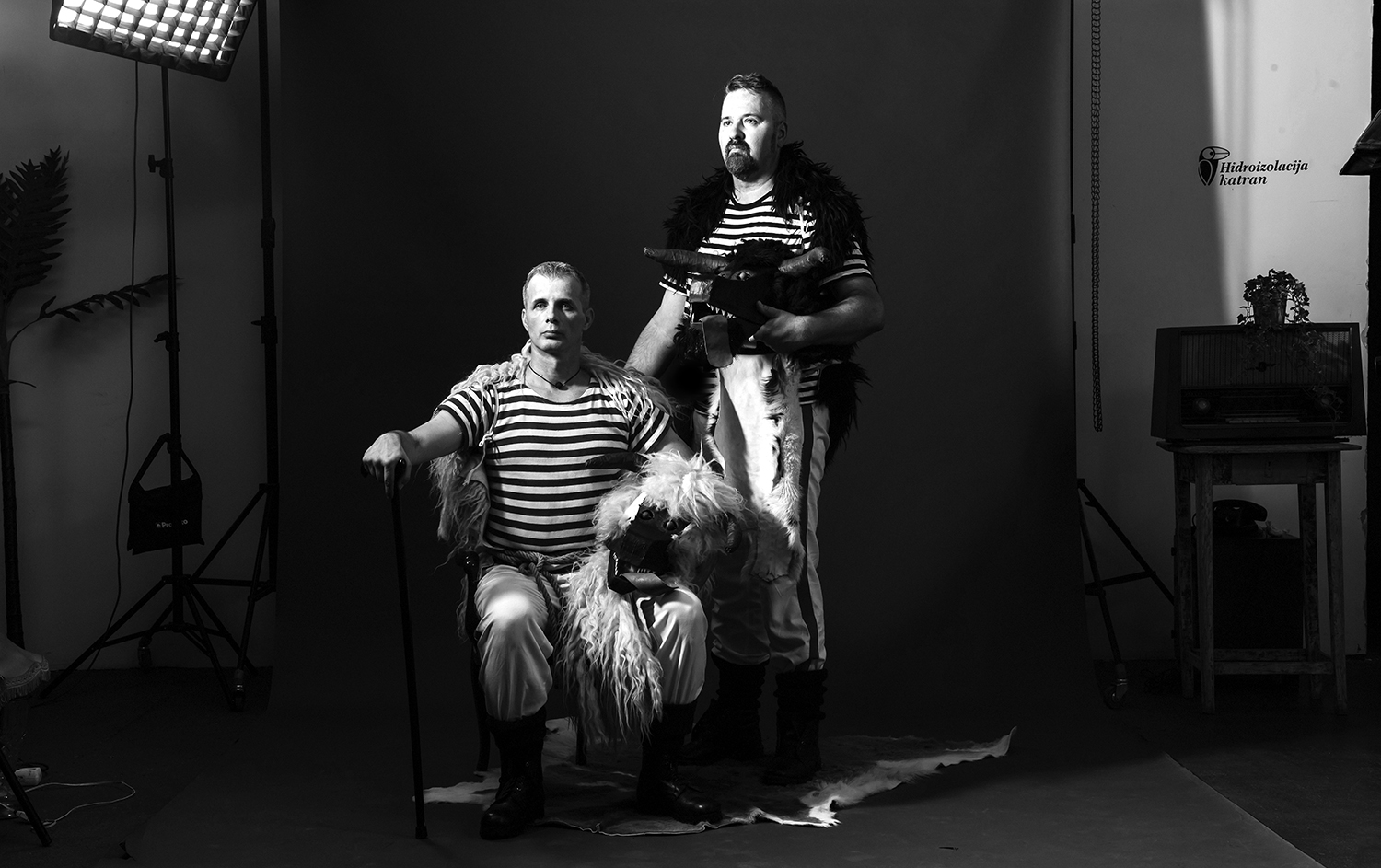 LADO Electro: Hrvoje Crnić Boxer and Boris Harfman | Photo: Petra SlobodnjakReflecting and refracting Croatian culture is at the heart of LADO Electro’s worldly hybrid music. The duo, comprised of multi-instrumentalists and producers Hrvoje Crnić Boxer and Boris Harfman, is revered in its home country for its innovative combination of electronica and traditional Croatian music and dance.
LADO Electro: Hrvoje Crnić Boxer and Boris Harfman | Photo: Petra SlobodnjakReflecting and refracting Croatian culture is at the heart of LADO Electro’s worldly hybrid music. The duo, comprised of multi-instrumentalists and producers Hrvoje Crnić Boxer and Boris Harfman, is revered in its home country for its innovative combination of electronica and traditional Croatian music and dance.
Crnić and Harfman, who perform as HR Electro when working within the electronica realm, first joined forces with LADO, the national folk dance ensemble of Croatia, in 2002. LADO is considered one of Croatia’s leading cultural highlights. The ensemble includes 42 virtuoso dancers who are also all singers. In addition, LADO has 14 musicians who play 80 different classical and traditional regional instruments.
Harfman himself has been a member of LADO since 1997, performing as both a musician and dancer. And Crnić has a rich pre-LADO Electro history with important solo albums released as HC Boxer, including 2001’s Mediterran and 2002’s Futura. Both electronica recordings are also creatively infused with traditional Croatian elements.
Crnić and Harfman wanted to take their shared passion for creating intrigue and excitement among Croatian youth by recontextualizing traditional music within modern frameworks they could relate to. The result was a full-blown collaboration with LADO, yielding the 2003 self-titled debut LADO Electro album.
Simply put, the album is one of the single most unique global electronica recordings ever released. It seamlessly combines pulsing beats, drum and bass rhythms, swirling atmospheres, and soundscapes, with processed traditional Croatian singing and morphed and looped instrumentation. Croatian audiences agreed with the assessment and the album was a major national success. The lead single “1pura2pandura” and its accompanying recombinant video also achieved significant global attention.
It took 15 years for the next LADO Electro recording to emerge with 2018’s 2.0 Memorabilium. The long gap resulted from the LADO Ensemble remaining in great demand across the world for performances, and the extensive logistics and commitments involved in making a LADO Electro album. But Crnić and Harfman made the most of the situation, eventually completing an ambitious double-album that was a significant evolution from previous output.
2.0 Memorabilium looks at LADO Electro through two lenses. Crnić and Harfman each helm one disc, with the other making contributions to it. Crnić takes an open-field approach full of space and sonic lucidity. Harfman offers a densely-layered take, featuring more samples and processing. Together, they provide fascinating and complementary contrasts on the LADO Electro vision.
Recent times have seen LADO Electro bring its music to large stages in Croatia, including Tvornica Kulture, Barone Fortress, and The opening of the Summer at MSU. In addition, the group performed a globally-televised concert at the Expo 2020 World Exhibition in Dubai.
The spirit of LADO Electro also resides in two 2022 albums. Kolectrified finds Crnić and Harfman working under the name Folklorelektro and partnering with Kolo Slavuj, another Croatian traditional ensemble. Together, they mesh electronica with the folk songs of the Gradišćan Croats from Austria, Hungary, and Slovakia. And Harfman’s 2022 solo album, Cabaret Folklorico, released through the project moniker Mokosh, combines traditional Croatian music with darker electronics and industrial elements.
In LADO Electro’s first major English interview, Crnić and Harfman provided extensive insights into its origins, its journey and impact, the rich heritage of traditional Croatian music, and a view on the deep value of cultural cross-pollination.
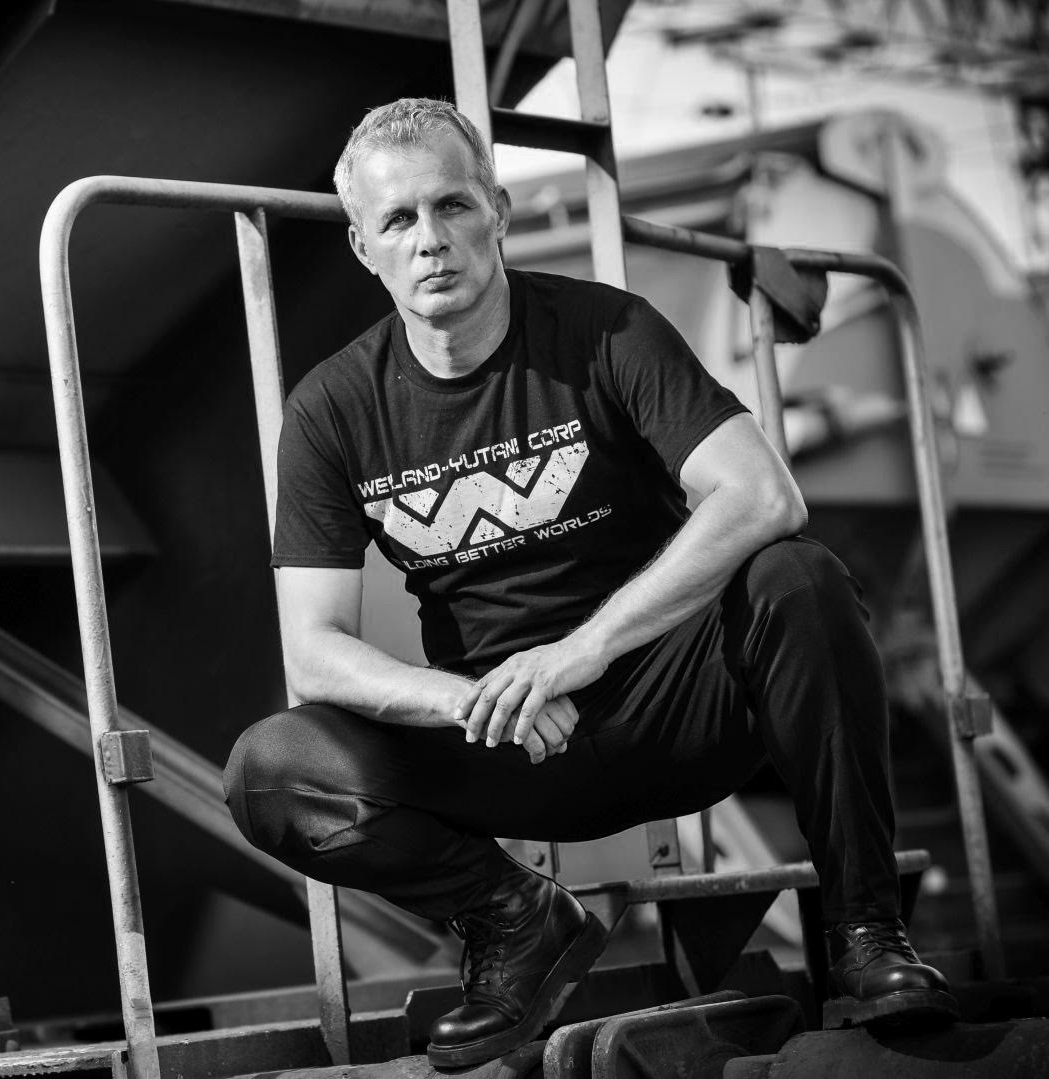 Boris Harfman | Photo: Saša Zinaja/Nfoto
Boris Harfman | Photo: Saša Zinaja/Nfoto
Describe your personal musical journeys that led to LADO Electro.
Crnić: My personal journey started with listening to Pink Floyd, Jean-Michel Jarre, and Kraftwerk in elementary school and continued with The Clash, Joy Division, Talking Heads, New Order, and playing bass guitar in a local post-punk band. A big step was my entry into the multimedia group Montažstroj Theatre from Zagreb and composing theater and film soundtracks.
Harfman: Until 1999, in fact, all I did was engage in a long preparation leading to LADO Electro. My fascination with electronic music started at the end of the ‘70s with the discovery of Kraftwerk and Cabaret Voltaire. I was also involved in amateur dancing in a folk ensemble through which I discovered a love for traditional heritage that I begin to research, record, and collect. I started choreographing the same material through the dance groups where I worked as an artistic director. With the advent of the Amiga and Commodore 64 home computers, I started experimenting with electronic music myself, but also trying to combine it with folk music.
In 1997, after passing an audition, I got a job as a dancer in LADO, where I still work today. In 1999, played my demos to Ivan Ivančan Jr., the artistic director of LADO, which he liked. As a joint initiative, the first song “Na Jurjevo” was created, for which the choreography was also devised. From that moment, the idea for the LADO Electro project arose and I started composing, playing, and occasionally working as a DJ and producer.
How did you both first connect and what made you want to work together?
Harfman: I liked Hrvoje's work as a composer for Montažstroj Theatre. Later, at the beginning of the war in Croatia in 1992, he released the song “Croatia in Flame,” which was also the first Croatian video broadcast on MTV. It was the first Croatian song that was close to some of my musical affinities. In 1999, his solo album Futura was released under the name HC Boxer. It was the first combination of electronic and Croatian folk music that I heard, and I was delighted. For some Futura songs, recordings of the LADO Ensemble were used, so Hrvoje had already collaborated with Ivan Ivančan Jr. and LADO.
After I made the song “Na Jurjevo,” the artistic director asked me if I would make more songs in which I would combine electronic and traditional music in order to present Croatian heritage in a new and original way, and reach a different audience. The idea was excellent, but I was not ready to embark on such a project alone with one of the world's best folklore ensembles. We came to the conclusion that joint cooperation with an external expert was needed. We both agreed that it was Hrvoje. Ivan called him and arranged a meeting. Hrvoje heard the idea, my demo recordings, and agreed to do the project. Since that day, we’ve worked together for 24 years.
Crnić: We were united by a similar way of thinking about traditional and electronic music. I composed “Croatia in Flame,” an anti-war song done during the difficult war times. It was very popular and successful in spreading the truth about Croatia to the world.
Following that, the LADO Electro project had its predecessor as far as my authorship is concerned through Futura. In a way, it was my invitation. Futura was very successful and well received. I sub-labeled it ambient-ethno-drum and bass. It's still enjoyed in certain circles, and I still take parts from it for other work. I often use my signature sounds wherever I can. It's like using a favorite guitar or effects pedal. Futura is really like my personal identification card album. My second solo album Mediterran from 2001 also has music that is related to LADO Electro. It was the soundtrack of the theater play Blood Wedding based on Federico Garcia Lorca's fantastic text.
In parallel, Boris and I founded HR Electro as a composer-producer duo. In 2002, HR Electro, together with the LADO Ensemble became the LADO Electro project, and we started recording the debut album. In the studio, I always followed the main original pattern of using a vocal line or a traditional instrument as the basis. The goal was to preserve the essence of the sound and not drown it out but support it with electronics. My previous experience with composing soundtracks gave me that natural direction.
Harfman: The common idea of all participants was to create work that would present Croatian traditional heritage in a new and fresh way. Until then, this material was mainly presented through folk, rock, or jazz. Apart from Hrvoje, the most similar music to what we do was the group Legen, and today, Kries with Mojmir Novaković.
We chose some compositions from the rich oeuvre of LADO and started searching and experimenting with the vocals of this powerful ensemble. We recorded the choir in the studio, separated the samples and got to work. Working on the material, we decided to devote ourselves to the deconstruction of the existing compositions, and changing them with maximum respect for their origins. We devoted ourselves to the atmosphere of the music, the basic melodies, and the text. Then we’d cut and paste, filter, and modulate. We added a dance rhythm to all of that. That's how the album LADO Electro was born. It became one of the best ethnic and dance albums of the Croatian discography.
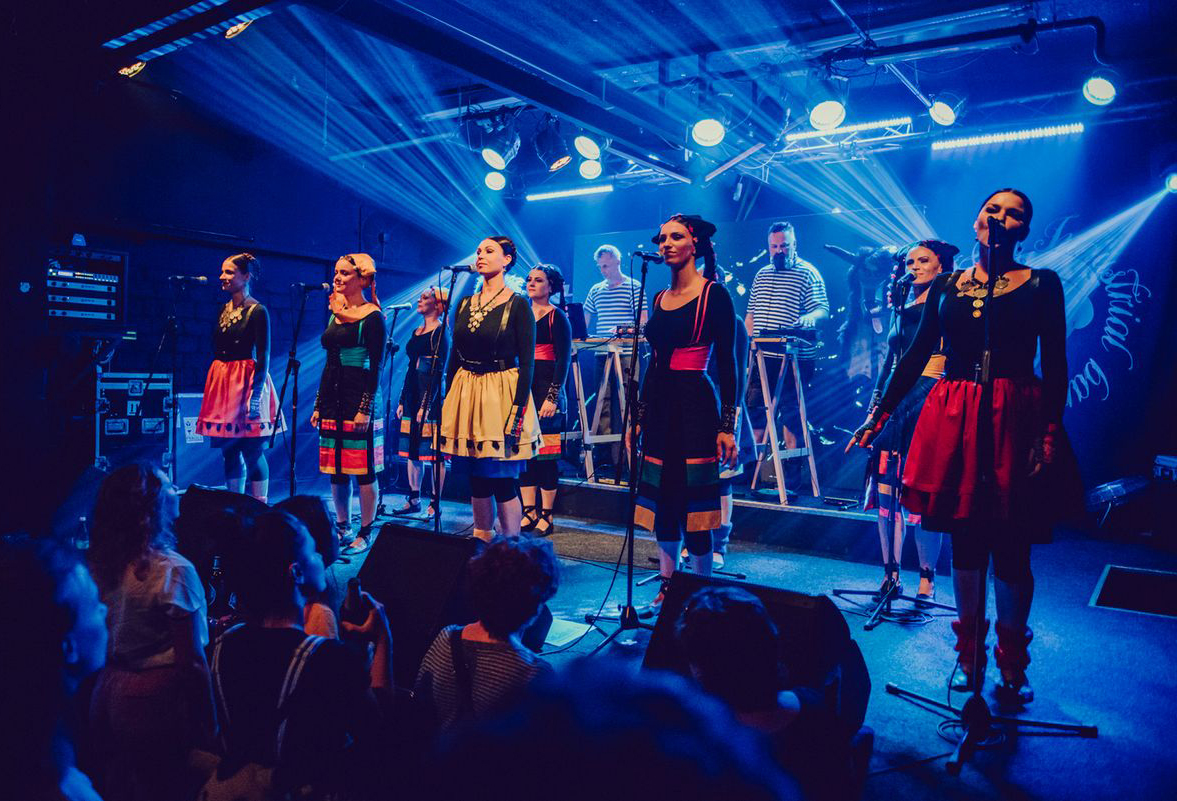 LADO Electro in concert at Vintage Industrial Bar, Zagreb, Croatia, 2022 | Photo: LADO
LADO Electro in concert at Vintage Industrial Bar, Zagreb, Croatia, 2022 | Photo: LADO
Reflect on realizing the self-titled LADO Electro debut album.
Harfman: LADO is very careful and serious when working on material that does not fall into the primary activity of the ensemble, namely dance and folk music. They make sure that everything LADO does is at the highest artistic level, original, and appropriate to the reputation of the ensemble. They carefully select collaborators, including choreographers, costume designers, and composers. Not all ideas and proposals for cooperation are accepted. Those who have the opportunity to work with this art house are lucky and honored. In our case, the honor is greater because LADO invited us to realize LADO Electro.
Crnić: Their reaction was great. LADO was enthusiastic about the way we approached the project, and the collaboration became more creative over time.
Harfman: Care had to be taken in making this album. All the more so since it was a debut. It couldn’t sound cheap or shallow. It had to be something new—something no-one had ever heard. On the other hand, Hrvoje and I belong more to the alternative independent world. We are not mainstream. Here, however, we had to create a balance so that it would be worthy of LADO. The result was excellent for all parties.
We made an album that was immediately called the pinnacle of Croatian electronic and ethnic music and as such was nominated for the Porin Discography Award. With this album, we set some new standards, especially in the combination of folk and electronic music, which was really new at the time. According to the words of music critics and through various reviews, we combined two otherwise seemingly incompatible things. We didn't think about any prizes because we didn't expect that everyone would understand what we were doing.
What are some of the keys to seamlessly combining electronics and traditional instrumentation?
Crnić: As far as my compositional approach, the key is to “build the house from the roof down.” I start from the traditional element—such as a solo vocal, choir phrase, or traditional instrument melody—and build a structure under it. In a certain way, I am composing backwards and adjusting to the main traditional element in the future song.
Harfman: The key to getting started is to have good knowledge of all these components. It’s also important to have a respectful attitude towards traditional instruments. In fact, respect for tradition itself. Then you need to create a good balance between electronics and other components. Next, you need to bring a piece of your soul and emotions into the electronics. I think those are the keys.
Boris, discuss the traditional instruments you play and how they influence the music.
Harfman: I learned to play some of the traditional Croatian musical instruments. The first reason was that I liked the instruments. On the other hand, I improved and refined myself musically. I play bagpipes, which are made differently from the well-known Scottish ones. Then there is the shepherd's flute, the lijerica—a musical instrument from the Croatian region of Dalmatia and Croat parts of Eastern Herzegovina. It's a pear-shaped, three-stringed instrument which is played with a bow. It’s played to accompany the traditional Linđo dance from the regions.
I also play sopile, a traditional Croatian woodwind instrument similar to the oboe or shawm. It's used in the regions of Kvarner, Kastav, Vinodol, Island Krk, and Istria. Sopila are always played in pairs, so there are big and small, or thin and fat sopila. They offer very interesting possibilities with a unique piercing sound.
I'm not a virtuoso on those instruments, but my knowledge is enough to play a quality melody or accompany dancers. The knowledge helps me a lot in composing, although we always hire LADO professionals or someone who is really good to record.
Describe the creative process between you and the LADO singers and musicians.
Crnić: Depending on the material we are working on, each new song is, in a way, a new beginning, a new work, with different artists. In one song, the entire choir can participate. In another, it may only involve a solo vocal. And in the third, it may be focused on a traditional instrument. It's a great and exciting creative process.
Harfman: Considering that I am also a member of the LADO Ensemble, some things went very quickly. My knowledge of the Croatian tradition and repertoire of the LADO Ensemble helped the rehearsals and preparation—with additional artistic and creative guidance, of course. Hrvoje was a great help and mentor to me when it came to composing and referring to the secret productions of electronic music, considering that I was quite inexperienced in that segment. The ensemble reacted positively to the preparation and rehearsals, and the recording of the choir in the studio went quickly and possessed a good atmosphere.
Talk about the diversity of the traditional Croatian music you explore.
Harfman: Croatian music is very rich and diverse. Each region has its own instruments, songs, dances, and costumes. A lot of music is very old and archaic, but well-preserved to this day. Through the performances of the LADO Ensemble and other dance groups, much of it still lives on through people in the countryside or is documented and available in professional institutions.
We tried to show as much as we could, in the given time of the CD format, the wealth of Croatian regions—from Slavonia in the East, through Central and Northwestern areas, to the mountainous Croatia and Istria, to Dalmatia and the Dalmatian islands to Dubrovnik. This journey includes different ways of singing, dialects, and characteristic traditional instruments.
Crnić: Croatian traditional heritage is varied, impressive, and inspiring. As Boris said, the diversity of Croatian regions is incredible from various continental, mountainous, coastal, and island regions. Each region has its own wonderful specificities, but all deeply rooted in Croatian tradition.
 Hrvoje Crnić Boxer in the studio recording upright bass | Photo: Ema Crnić
Hrvoje Crnić Boxer in the studio recording upright bass | Photo: Ema Crnić
Expand on the reaction to the first record.
Harfman: The reactions were more than positive. Reactions outside of Croatia were mostly rare in the interim period, but positive as well. Croatia is a small country with a very unknown discography. Most of the criticism came from neighboring countries such as Slovenia, Austria, Hungary, and Italy. Others gradually discovered this project over time. And their reviews were positive.
Regardless of the fact that almost 21 years have passed since the first album, the album sounds timeless. I guess that means it’s good. Young people's opinions are different if you take into account the affinities and everything that is offered today. But mostly they remain very positive. It's nice to see young people singing folk songs with electronics at our concerts. That was one of the main goals.
We remain unique in the Croatian electronic scene. LADO Electro also influenced the choice of folk songs that we chose to use in some other projects. There were also some attempts to copy our work, which I'm glad about. For now, we are still different, both in LADO Electro and the new Folklorelektro project.
If LADO Electro was better known outside of Croatia, it might have encouraged other musicians and composers to use Croatian music as inspiration. They would surely be surprised to hear how diverse and rich the material is. Let's take for example Lisa Gerrard and The Mystery of Bulgarian Voices. Their joint project popularized Bulgarian folk songs.
The single “1pura2pandura” from the debut album was extremely popular in Croatia. Discuss the song’s message and construction.
Harfman: The lyrics of “1pura2pandura” talk about the transience of life and how it’s all fleeting.
It immediately caused positive reactions, but also amazement. People would ask “Is this LADO? Are we dancing to LADO in a club or at a party?” It was also a good way to introduce the album and project.
The structure of the song itself is the most brajal. That's what we say in Croatia. It starts from one stanza. In the second stanza, the first stanza is repeated, and a new one is added. In the third, the first two stanzas are repeated plus one new one. This can be repeated indefinitely.
Many songs of this type have been recorded. The structure of this song is folk. A popular version was included in the soundtrack for the 1967 Croatian film Breza.
The Croatian ethnomusicologist and conductor Dr. Joško Ćaleta arranged “1pura2pandura” for us. It’s the only song on the album that’s not inspired by a specific traditional song but is so well known and sung by the Croatian people that it's already becoming part of the heritage.
Why was there a 15-year gap between the first album and 2.0 Memorabilium?
Crnić: For us as authors, it was not a time gap. We both worked on dozens of other projects, including for television, film, theater, and dance. Given those opportunities, it just worked out that way. It also meant we had time to accumulate many ideas to create a big, memorable double album with the second release.
Harfman: The LADO Ensemble has many concerts in Croatia and around the world beyond LADO Electro. There was so much in the ensemble's regular program and commitments that it was not possible to realize it earlier.
Discuss the decision to take the approach in which each of you served as a leader, producer, and writer of one of the two discs on 2.0 Memorabilium.
Crnić: That idea just fell into place naturally. It expanded this album into another additional element of authorship, as an open concept for each of us to express his own creation, without interfering in the essence of the compositions. We think that this gives the album another important dimension, originality, additional personalization, and quality.
Harfman: Through our projects, Hrvoje and I have built separate styles. For the second album, we decided that it would be convenient for everyone to present the majority of their music in their own way.
Explore the ways you collaborated, given that approach.
Crnić: There are songs on the album that were composed in such a way that they were inspired by Croatian tradition but were newly-written for this album, such as “Lepi Valcer” and “Crni Moro.” For those, we delicately consulted about the performers who would best capture the essence of the song while we were recording in the studio, and we tried out different options.
Harfman: It's about two different sensibilities and approaches—and different approaches to the equipment we work with. Hrvoje’s approach is cleaner and has the beauty of simplicity and purity. I like to use more textures, samples, and complicated line forms. It's this approach that makes our live performances dynamic and interesting for the audience.
The path was the same as for all joint projects: we choose folk songs together and decide who will cover which. We listen, comment, and make suggestions. Hrvoje provides more advice related to production and I give advice related to vocals or songs that served as inspiration.
What evolution do you feel 2.0 Memorabilium represents from the debut album?
Harfman: The most obvious change is that we gave the vocals more space on this album. There are extraordinary and unique folklore singers and voices on it. That's why we didn't change or experiment with the vocal recordings this time. We wanted the songs to be what they are and give the singers the opportunity to present themselves to an audience that has not heard them as they really are. The lyrics are more understandable for the audiences who sing at concerts. Of course, the music production itself is different than in 2002.
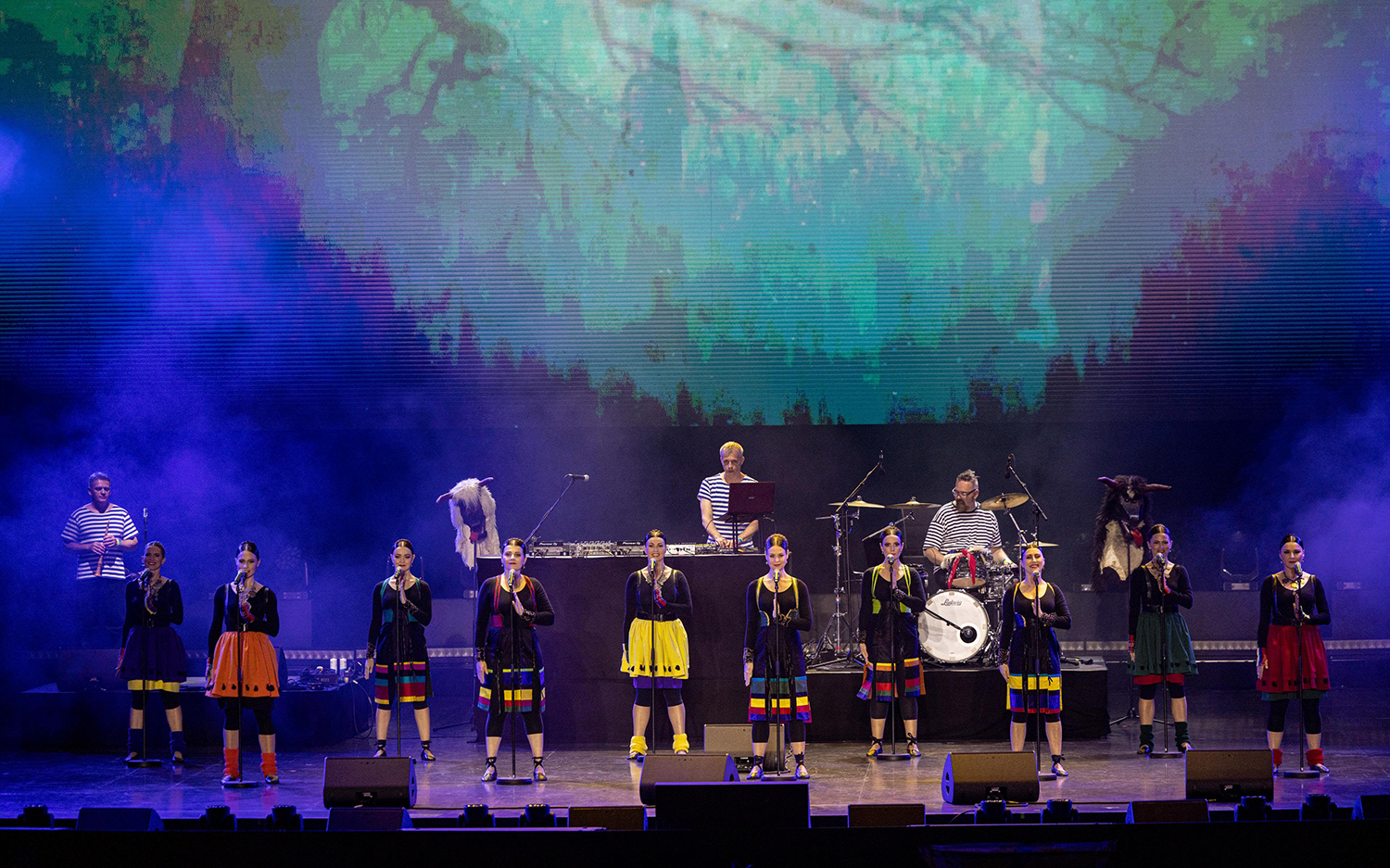 LADO Electro performs at Club Tvornica, Zagreb, Croatia, 2022 | Photo: Petra Slobodnjak
LADO Electro performs at Club Tvornica, Zagreb, Croatia, 2022 | Photo: Petra Slobodnjak
You’ve held several major concerts in recent years. Talk about the intricacies of bringing LADO Electro to life in performance.
Harfman: The concerts include the LADO choir, players on traditional instruments, and Hrvoje and I on synths and keyboards. The performances feature video projections, choreography, and special costumes. The concerts are highly anticipated and well attended. Considering that LADO tours a lot with its primary dance concerts or programs throughout the year, LADO Electro concerts are not frequent.
When preparing for concerts, the biggest challenge is to choose songs from the first and second albums in order to present the work. We cannot do all the material because it would take a long time to prepare. Certainly, the biggest challenge is to come up with the movements and choreography that the singers perform during the concert. This is where the most time was spent.
Choosing the LADO performers who participate in the concerts is another difficult part of the job, considering that everyone loves this project. Due to the number of people in LADO, the whole choir cannot participate.
The last consideration is creating videos and designing the lighting that accompanies the concerts. Hrvoje and I do everything ourselves. The work was complex and challenging, but that was exactly what motivated us, and we are satisfied with the results.
How did you collaborate with the LADO dancers and choreographers to craft dance sequences that complement the music?
Harfman: I had to take them out of their safety zone, which is folk dance, in which they are really striving for perfection. Sometimes it is difficult for us to switch to something that is new and foreign to us. As I am a dancer in LADO, I know how it is. It was necessary to flirt with elements of contemporary dance or hip-hop. We wanted them to express themselves freely outside the usual forms. I sent them recordings of Batsheva Dance Company, Jabbawockeez, and various other groups to consider something new and unusual for folk dancers. The goal was to create a high quality and interesting concert performance. I think we succeeded. It is a unique event to see the audience dancing the same as the girls during “Lepi Valcer.”
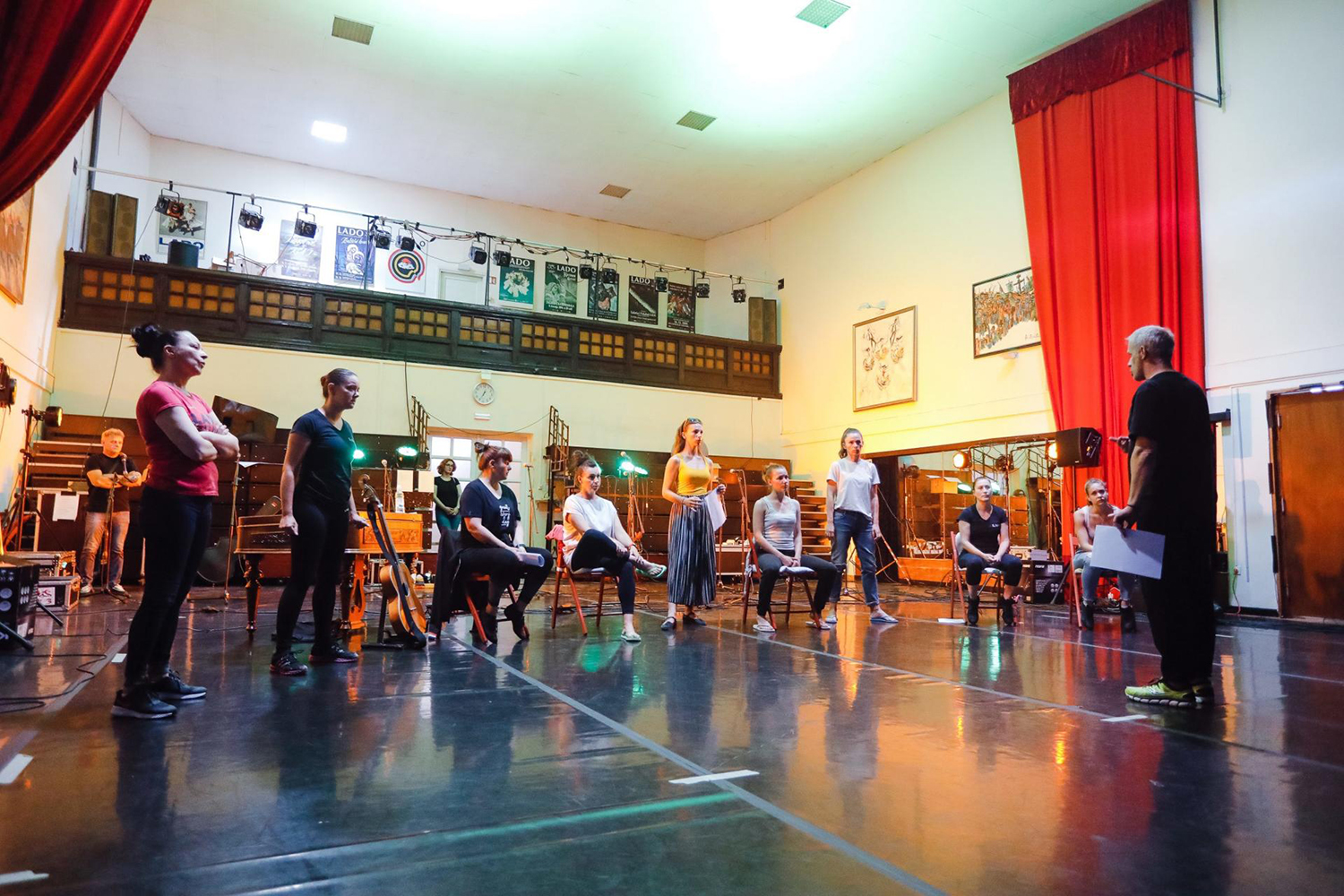 Boris Harfman rehearses with members of LADO at LADO Ensemble Hall, Zagreb, Croatia, 2019 | Photo: Marko Todorov/Cropix
Boris Harfman rehearses with members of LADO at LADO Ensemble Hall, Zagreb, Croatia, 2019 | Photo: Marko Todorov/Cropix
Describe how the music from 2.0 Memorabilium has been adapted across other cultural realms.
Harfman: The song “Lepi Valcer” was the advertising trademark of a large Croatian company for a year. The advertisement delighted viewers. Our music is often used for fashion shows by Croatian fashion designers. Also, every year, students of the Drama Academy from Zagreb use our music for their graduation theses. Various dance groups also like our music. In addition, Filip Petkovski from Skopje used LADO Electro for his dance performance.
Tell me about the concept behind Kolectrified and how it relates to and differs from LADO Electro.
Crnić: We came up with the idea of working with Kolo Slavuj, a supra-regional folklore ensemble from the Burgenland Croats, a cross-border minority group. The ensemble represents the Croat ethnic group in its entirety, both in terms of the origin of the ensemble members and repertoire—from Austria across Vienna and the whole of Burgenland to Western Hungary, Slovakia, and Moravia. It was completely different from working on LADO Electro albums.
Harfman: We covered only the folk songs of the Gradišćan Croats from Austria and parts of Hungary and Slovakia on Kolectrified. For us, it is a continuation of musical research, but in collaboration with other folklore groups.
Kolo Slavuj is an ensemble that through dance, song, music, literature and other forms of culture presents and preserves language, customs, and other segments of heritage. This was our contribution to this preservation. In addition, we wanted to present to the Croatian public the beautiful songs of this community, which they rarely or never have the opportunity to hear.
Crnić: The album was made during the COVID-19 pandemic through online collaboration, including Zoom and WhatsApp meetings. It was recorded and mixed in different countries. We made the videos in the same way. It was an interesting collaboration with great results.
Harfman: The choir rehearsed and recorded vocals in Vienna and sent them to us in Zagreb. We sent any suggestions and instructions after listening, and they would re-record and send back new versions. Next, we recorded the instrumentals and did the mix in Zagreb. They would offer their suggestions for changes once they heard them. We never met right up until the finalization of the master.
We also rehearsed the choreography for a concert at the Croatian Ball online via recordings. We only had one rehearsal together the day before the concert. It was a completely new and different experience from all the previous ones.
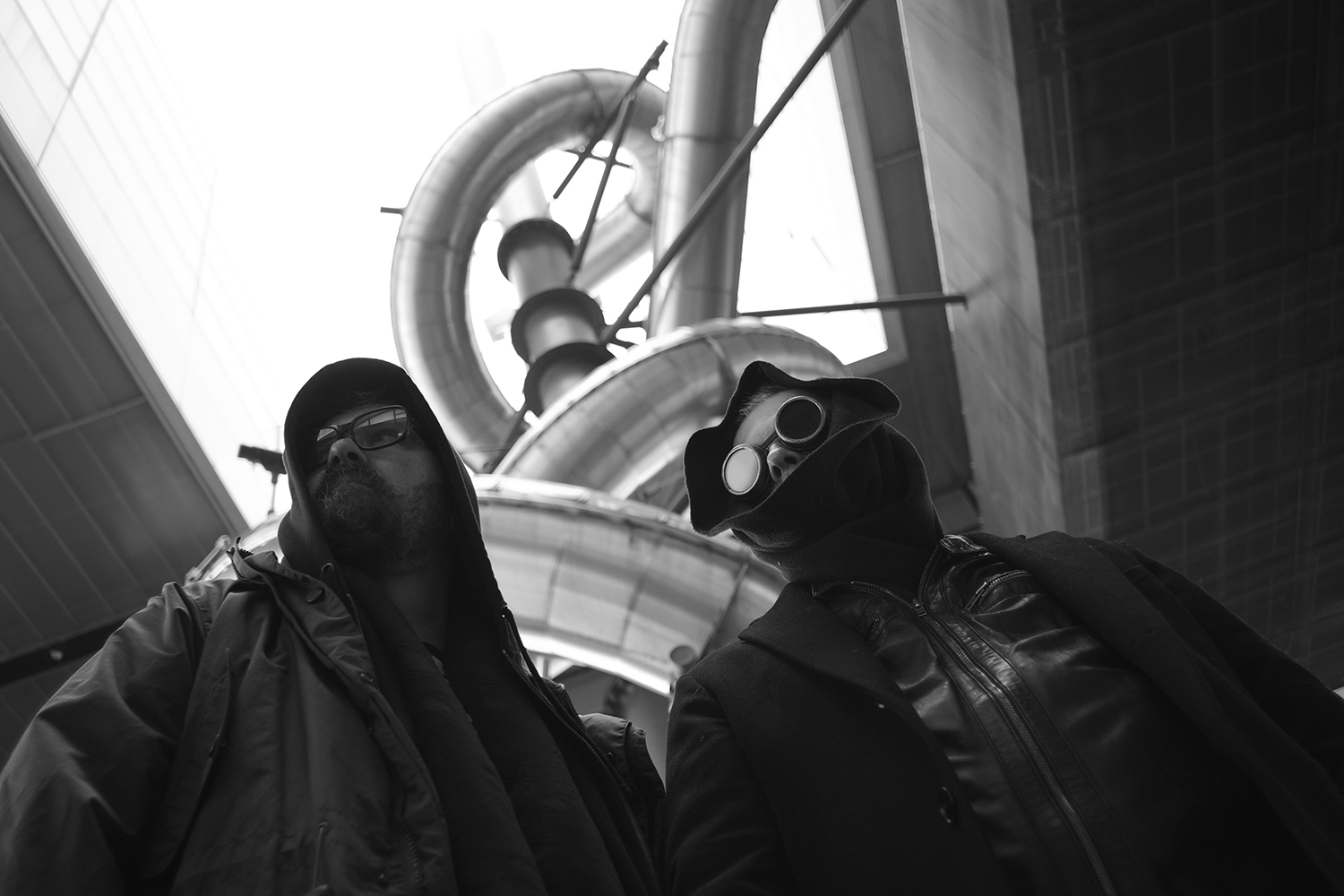 Folklorelektro: Hrvoje Crnić Boxer and Boris Harfman | Photo: Miran Krčadinac
Folklorelektro: Hrvoje Crnić Boxer and Boris Harfman | Photo: Miran Krčadinac
Boris, explore the idea behind Mokosh’s Cabaret Folklorico, a recent related album driven by your vision and compositions.
Harfman: During lockdown, I simply started composing new material and decided to release a solo album. I worked on Kolectrified with Hrvoje at the same time, but there was enough time to turn some ideas that were floating around in my head into other music as well. Considering that Hrvoje and I are very cautious in composing when we work with people such as LADO, I decided to try something different—something that might not be looked upon as strictly because it's my solo project. I decided to combine traditional tunes with a slightly tighter and darker electronic sound that flirts a lot with industrial music and EBM. That's how Mokosh was born.
The acclaimed photographer Marija Buljeta played an important role in Cabaret Folklorico’s visuals. She also influenced the selection of collaborators for its remix disc. Describe her contributions.
Harfman: Marija is an excellent person. We met through social networks. On one occasion, I read an article about her and her work in a weekly newspaper. After a while, I saw her name under a comment in a group I'm a member of. I contacted her and we connected.
Since I liked how and what she does, I asked her if she would like to work on the visuals for Cabaret Folklorico. To my great joy, she agreed. We met after a couple of months when she came to Zagreb for a short time from London. One of her photos simply knocked me out of my shoes. We tried a few ideas and solutions, but that photo ended up being the cover and booklet of the album. In collaboration with Violeta Juras, she made something wonderful for me. The single “None” also features her beautiful artwork.
While we were arranging that part of the album release, she suggested someone remix one of the songs. Since we have similar musical affinities, she knew exactly who would be good or the best for it. The first name was the legendary John Fryer. Since they know each other, she used her influence and connected us. John agreed to do the remix, which I'm extremely proud of. In fact, through conversations, Marija was the initiator and trigger of Cabaret Folklorico being a double album with a remix disc. She also suggested Matthew Setzer and Dan Milligan as remixers, and put me in touch with them as well. I’m extremely grateful to her for everyone she introduced me to.
The remix disc also features Hrvoje and two other Croatian forces—Mladen Đikić, with whom Hrvoje and I collaborated through his project No Name No Fame, and Zarkoff, an excellent electronic musician. In addition, it includes a couple of other foreign musicians and producers whose work I follow and like: Blush Response, aka Joy Gonzales, and the legendary Iztok Turk from Ljubljana.
What does the future hold for LADO Electro and your work together?
Crnić: We would like to record a live LADO Electro album. There are also some plans for recording a soundtrack album.
Harfman: Future LADO Electro music primarily depends on the obligations of the LADO Ensemble. We would also like to do many more joint performances with them.
LADO Electro remains in the public eye. According to a poll in 2024, the first LADO Electro album is in tenth place as one of the best Croatian dance albums ever released.
Currently, Hrovje and I are focused on further work with Folklorelektro, together with the female group Zwizde from Zagreb. We have live performances coming up with them. My wish is that we start working together and experimenting with the traditional music of other peoples and countries as well.
What do you see as the value of music to connect and elevate people at a time when so many are so polarized?
Harfman: Like other types of art, music has always been able to be understood and felt by different cultures and people regardless of their origin, status, religion, or place of living. Music equalizes us, ennobles us, and connects us with its messages through sound and lyrics. It brings us together and connects us, especially in today's era where with one click, we can be present at something on the other side of the world. It can connect us in large numbers, regardless of where we are, in the idea and feeling of trying to influence the processes and events around us. We celebrate beauty and life through it.
Crnić: Regardless of social, political, economic, and artistic polarizations in our societies at all levels, the possibilities of music are endless. It’s the universal language of the world.